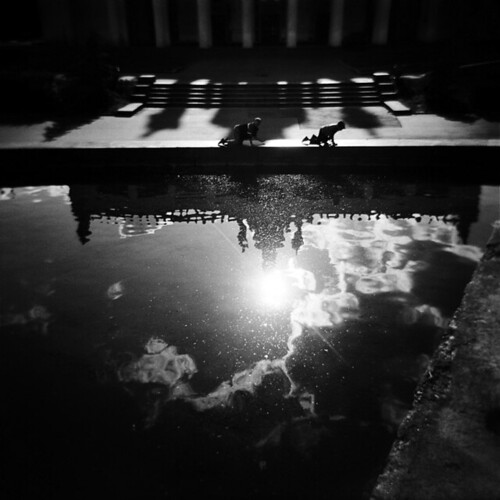Sure, it's real.
Following the aftermath of World War I, André Breton published his Manifesto of Surrealism. This document proposed a new way of working towards art by dealing with Freudian psychology and use of the unconscious. While the surrealist movement created many more famous painters, such as Salvador Dali, and poets it also helped to create a number of surrealist photographers.
In the 1920's when this movement originated there was very little a photographer could do to manipulate film. Most of the artists worked with slanted angles, juxtaposition, combination printing, or double exposure. It would take much creativity, trial, and error for a photographer to produce an image like the one below.

This surrealist ideal forced photographers to think outside the box in a time when cameras were often large and a time consuming endeavor. (From personal experience I can tell you that lugging around a 4x5 monorail camera through a desert in July is not enjoyable.) Compared to technology today it can be much easier to create images and enhance the surrealism.
Fast forward almost eighty years, and the surrealist movement is still holding it's own. Nowadays images can be manipulated much further and are still manipulating reality. One photographer, Erik Johansson, is working as freelance and a student but also develops images that push what the viewer is actually seeing. While some images are at first glance obviously fake, he is also able to use combine images that require a double-take.


Though these images sometimes lack reality or congruency they are attention grabbing. But, then again, surrealism does attempt to defy logic.
In the 1920's when this movement originated there was very little a photographer could do to manipulate film. Most of the artists worked with slanted angles, juxtaposition, combination printing, or double exposure. It would take much creativity, trial, and error for a photographer to produce an image like the one below.

This surrealist ideal forced photographers to think outside the box in a time when cameras were often large and a time consuming endeavor. (From personal experience I can tell you that lugging around a 4x5 monorail camera through a desert in July is not enjoyable.) Compared to technology today it can be much easier to create images and enhance the surrealism.
Fast forward almost eighty years, and the surrealist movement is still holding it's own. Nowadays images can be manipulated much further and are still manipulating reality. One photographer, Erik Johansson, is working as freelance and a student but also develops images that push what the viewer is actually seeing. While some images are at first glance obviously fake, he is also able to use combine images that require a double-take.


Though these images sometimes lack reality or congruency they are attention grabbing. But, then again, surrealism does attempt to defy logic.




